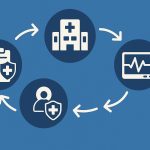In the ever-evolving landscape of our lives, navigating towards success requires more than just intuition and guesswork. Whether you’re scaling the corporate ladder, mastering a new skill, or guiding others towards their own potential, assessment tools become your compass, illuminating the path and providing the data needed to make informed decisions. From educators crafting personalized learning plans to entrepreneurs gauging market trends, assessment tools empower individuals and organizations to understand, adapt, and ultimately, unlock the doors to success.
Understanding Assessment Tools
Imagine a toolbox overflowing with instruments, each designed to measure a specific aspect of your performance, knowledge, or skills. That’s essentially what assessment tools are – a diverse range of methods and platforms used to gather and analyse data, guiding us towards informed decision-making and growth. These tools go beyond the traditional pen-and-paper tests, encompassing everything from interactive online platforms to self-reflection exercises.
Types of Assessment Tools
The beauty of assessment tools lies in their versatility. From education to the workplace, health, and even personal development, there’s a tool tailored to your specific needs. Let’s delve into some key categories:
1. Educational Assessment Tools
-Standardized Tests: These tried-and-true methods, like SATs or ACTs, measure academic knowledge and skills in a standardized manner, providing a benchmark for comparison and evaluation.
-Formative Assessment: Think quizzes, class discussions, and even exit tickets. These tools offer real-time feedback during the learning process, helping educators adjust their teaching strategies and students identify areas for improvement.
-Performance-Based Assessments: Projects, presentations, and portfolios showcase a student’s ability to apply knowledge and skills in real-world scenarios, offering a more holistic picture of their understanding.
2. Workplace Assessment Tools
– 360-Degree Feedback: This multi-perspective tool gathers feedback from peers, supervisors, and even subordinates, providing a comprehensive view of an employee’s strengths, weaknesses, and overall performance.
– Personality Assessments: Tools like Myers-Briggs Type Indicator (MBTI) and ttisuccessinsights.ie unlock insights into individual preferences and working styles, fostering team collaboration and understanding diverse strengths within a group.
– Skill Assessments: From technical skills to leadership qualities, these tools evaluate specific competencies required for a particular role or project, ensuring the right person is placed in the right job.
3. Health and Wellness Assessments
– Health Risk Assessments: Identifying potential health risks early on is crucial for preventative measures. These tools assess lifestyle factors, family history, and medical data, providing individuals and healthcare professionals with valuable insights.
– Mental Health Assessments: Recognizing and addressing mental health concerns is becoming increasingly important. These tools help individuals and professionals such as blanchardstowncounselling.com assess symptoms, identify potential diagnoses, and develop appropriate treatment plans.
Benefits of Using Assessment Tools
The advantages of incorporating assessment tools into various aspects of life are numerous. Here are just a few:
1. Informed Decision-Making: Whether choosing the right college, selecting a perfect candidate for a job, or crafting an effective learning strategy, assessment tools provide objective data that fuels informed decisions based on concrete evidence, not just intuition or guesswork.
2. Personal and Professional Development: Self-assessment tools offer invaluable insights into your strengths, weaknesses, and areas for improvement, empowering you to set realistic goals and develop personalized plans for growth, both personally and professionally.
3. Enhanced Team Dynamics: In a workplace setting, team assessments foster collaboration and understanding. They help team members appreciate diverse skills, communication styles, and working preferences, leading to more effective teamwork and a stronger sense of unity.
4. Continuous Improvement: Regular assessments enable individuals and organizations to identify trends, track progress over time, and adapt strategies for continuous improvement. Whether it’s refining your teaching methods, fine-tuning your marketing campaign, or optimizing your training program, assessment data provides the roadmap for constant growth and success.
Considerations and Best Practices
While assessment tools are powerful allies, it’s important to approach them with a mindful and responsible attitude. Here are some key considerations:
– Alignment with Goals: Before choosing an assessment tool, ask yourself, “What do I want to achieve?” Clearly define your goals and objectives to ensure the chosen tool aligns with your specific needs.
– Validity and Reliability: Don’t let the allure of flashy technology fool you. Choose tools that are scientifically validated and reliable, meaning they measure what they intend to measure and produce consistent results over time.
– Ethical Use: Respect individual privacy and ensure ethical use of assessment tools, especially when dealing with sensitive information. Transparency and clear communication about the purpose and use of the data collected are crucial.
Conclusion
Assessment tools are not just instruments for measuring performance; they are catalysts for growth and success. By understanding their diverse types, recognizing their benefits, and approaching them with care and intention, you can unlock their full potential. Whether you’re a student seeking to excel in your studies, a professional aiming to climb the corporate ladder, leveraging the right assessment tools can provide the insights needed to make informed decisions, foster growth, and achieve your goals. Embrace the power of assessment tools and embark on a journey of continuous improvement and success.
Lynn Martelli is an editor at Readability. She received her MFA in Creative Writing from Antioch University and has worked as an editor for over 10 years. Lynn has edited a wide variety of books, including fiction, non-fiction, memoirs, and more. In her free time, Lynn enjoys reading, writing, and spending time with her family and friends.















